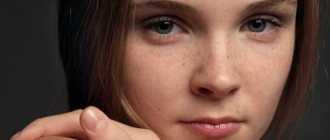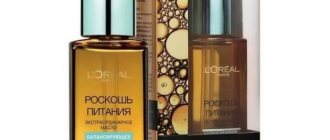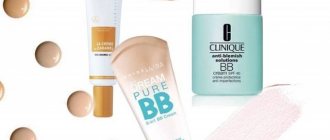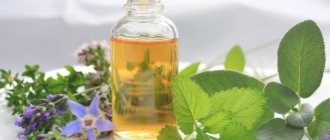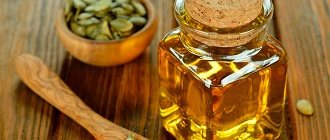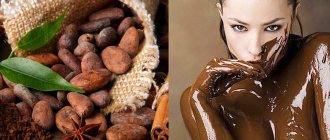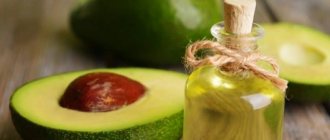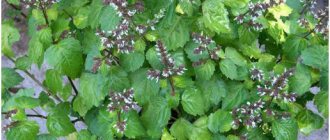- Nourishing face mask with shea butter
Shea butter (karite) is widely used in African countries. It is used in cooking and body and hair care. Western cosmetics companies became interested in the elastic, smooth skin and thick, strong hair of local women, and now shea butter is included in skin creams, balms and hair shampoos around the world. You can read about the benefits of shea butter for hair in our previous article. What is the secret of the “African miracle” for the face? Is it possible to prolong the youth and beauty of the skin with its help?
Shea butter for face: benefits and composition
Beneficial features:
Shea butter for the face is a natural herbal remedy, which, due to the high content of fatty acids in its composition, can actively moisturize the skin and regenerate it, and also cope well with dryness and flaking.
High levels of vitamin E, polyphenols and steroids in the composition determine the popularity of the product among ladies of elegant age. These natural components of shea butter provide good hydration for aging facial skin, stimulating restoration and making the skin more elastic.
By using shea butter for young facial skin, you can avoid problems such as acne, because the product also has anti-inflammatory properties.
Compound:
- Triglycerides are fatty acids (palmitic, stearic, oleic, linoleic and linolenic).
- Phytosterols, tocopherols.
- Vitamins E, B.
- Squalene.
- Xanthophyll.
- Carotene
Cosmetic products to get rid of the problem: general characteristics
In youth, metabolic processes in tissues proceed quickly. They slow down significantly with age: the rate of cell renewal and their enrichment with useful microelements decreases. You can activate the nutrition of tissues and accelerate the changes occurring in them, as well as stop the aging process of the skin with the help of additional means. Cosmetic oils do an excellent job of this task.
Almost all products of this type contain a huge amount of valuable substances: vitamins, phospholipids, minerals, various acids and other components. They quickly penetrate the skin and have an intense effect on all processes occurring in the cells. Each product has its own set of substances and unique beneficial properties, but almost all oils have the following general effects:
- qualitatively moisturize facial tissues;
- replenish the lack of healing substances in cells;
- accelerate metabolic functions;
- tidy up the production of sebum by the glands;
- activate collagen production;
- improve the elasticity of the skin.
An important advantage of such cosmetic oils is the absolute naturalness of their composition. The skin receives only natural substances without harmful impurities (if you choose the right product). Of course, the rejuvenating effect does not appear instantly: it is important to tune in to long-term and regular use of healing oils, and also become familiar with possible contraindications.
Cosmetic oils contain a huge number of components beneficial for facial skin.
Shea butter: properties and uses for the face
The method of application of the product affects its properties. Shea butter in facial cosmetology is used in its pure form, as a conductor for various esters, in combination with other herbal remedies, as well as in masks, scrubs, creams, including self-prepared ones.
On a note
Shea butter has a special penetrating ability, that is, along with it, the beneficial components of care products for the face, body and hair are delivered deep into the skin.
In this regard, shea butter may have the following beneficial properties for facial skin:
- it restores and softens the skin;
- protects against UV radiation;
- activates collagen synthesis in cells, which is necessary to maintain the required level of hydration;
- improves complexion;
- fights wrinkles;
- tightens and tones the skin;
- reduces scars and scars, including acne;
- helps with dermatitis, wounds, cracks, eczema;
- treats minor burns, including sunburn (especially unrefined oil);
- used in pure form or as the main component of lip balms.
The use of cosmetics based on shea butter is acceptable for different skin types, especially for aging, dry, sensitive and damaged skin.
The natural product of shea tree is non-comedogenic, that is, it does not clog pores. Due to its anti-inflammatory properties, it is also perfect for people with acne-prone skin.
How to use pure shea butter for the face?
You can use shea butter on your own for the face:
- as a remedy against wrinkles and creases on the skin - apply directly to problem areas;
- as a temporary replacement for a moisturizer for the face or eyes - in this case, a liquid form of an oil product is better;
- as a nourishing and moisturizing face mask;
- as an additional ingredient in a cream or lotion for the face - in liquid form (1-2 drops per single dose of skincare product);
- as protection from the sun and wind before going to the beach in summer or when skiing in winter;
- as a primer - if you apply the product to the skin of the eyelids and cheekbones, the makeup will last much longer;
- as a balm or lipstick - protection even in severe frost;
- as a remedy for excessive dryness - apply to the wings of the nose or other problem areas that are especially susceptible to peeling;
- as a component of a mixture for self-massage - in aroma cocktails with your favorite esters.
For different types of epidermis
For oily types: shea butter is a natural moisturizer, softens the skin and lightens pigmentation and post-acne. But it is not recommended to use it alone; with constant use, comedones may form. The recommended course for oily epidermis is once a week.
For normal: both in pure form and with nourishing masks.
For mixed use: it is especially good to use the product in the fight against crow’s feet and locally against age wrinkles.
Shea butter for face instead of cream
It is strictly not recommended to use the product on an ongoing basis instead of face cream. Before doing a face mask or massage, you must first moisturize your skin with a moisturizer, toner, hydrosol or lotion. Even plain water or a herbal decoction will do.
You can skip all this if you mix shea butter with your daily cream before applying it to your face.
Shea butter for face against acne
The product has antimicrobial and anti-inflammatory properties, therefore, it can be used to combat rashes.
To do this, it is permissible to make therapeutic masks for acne or simply apply an oil product locally to the pimple and leave it to act overnight, and rinse with clean water in the morning.
How to choose shea butter and ensure its high quality
The popularity of shea butter has played a cruel joke on it: the product is literally sold on every corner. But the quality of the oil is often far from what is desired. A good product has a soft milky hue and a dense oily consistency. The liquid state indicates violations of storage standards. And vice versa: if the butter does not melt in your hand, this is also a bad sign. But even if the oil looks “decent” on the outside, check the production date: over time, the product loses its beneficial properties. Pay attention to the price tag: high-quality oil made without the use of synthetic additives cannot be cheap.
When purchasing shea butter, pay attention to its color.
Unrefined oil has a creamy tone, sometimes with yellow, brown, gray or green tints, and a characteristic aroma. Refined shea butter is easily recognized by its snow-white color and lack of odor. But some unscrupulous manufacturers add dyes to white refined oil to achieve the desired effect and unjustifiably increase the cost. Therefore, purchase oil only from reliable sellers and carefully study the composition. It is desirable that the packaging bear the “organic” symbol, confirming the natural origin of all ingredients, as well as the “hexane-free” mark, indicating that no hexane was used in the production process.
Scrubs
- Scrub with coffee
This peeling will moisturize and eliminate excess of any type of epidermis.
You will need:
- olive and coconut oils – 1 part each;
- ground coffee and brown sugar - 3 parts each;
- shea butter – 4 parts;
- vanilla extract – ½ part.
Melt the main product in a water bath, cool for about an hour in the cold. Prepare whipped butter - beat the shea butter with a mixer or in a blender for about five minutes. Then add the rest of the mixture.
Use as a regular scrub; no additional moisturizing is required afterwards.
- Nourishing mask – scrub
This mixture is suitable for exfoliating dry and sensitive skin.
Need to:
- honey and sugar (preferably brown) - 1 part each;
- shea tree product and oat flour - 3 parts each.
You can add a little cinnamon and sandalwood ether (a couple of drops) to the mixture.
Melt the main product in a water bath, add the remaining ingredients. Mix and apply to face and lips moistened with hydrosol or water from a spray bottle. Massage gently. Leave the mixture to act for 10-15 minutes, rinse with clean water.
Creams
- Rejuvenating night face cream with shea butter
- Shea butter – 2 tsp.
- Rose water (hydrolate) – 1 tbsp.
- Beeswax, aloe juice, almond, peach, coconut and grape seed oils - all 1 teaspoon each.
- Vitamin E – 1 ampoule.
You can add your favorite ether (2-3 drops) depending on your skin type.
Mix everything vigorously, or better yet, beat it. Store your own prepared cream in the cold and apply every day before bed.
- Moisturizing face cream with shea butter that nourishes and improves complexion
- Jojoba and shea butters – a quarter cup each.
- Beeswax – table. spoon.
- Cinnamon tincture - a third of a glass.
- Orange juice and avocado oil - 2 teaspoons each. l.
- Sandalwood essential oil – 4 drops.
Melt the wax and butter in a water bath, add the remaining ingredients. Stir and remove the mixture from heat. While constantly stirring the mixture, add ether if desired.
Cool the cream, transfer to a glass container and store in the cold. Use as needed, like a regular skin care cream.
Advice
Shea butter has a very dense structure, so it is preferable to use face creams containing it in the evenings, two hours before bedtime. During this time, the bulk of the mixture will be absorbed, and the remainder can be removed with a clean paper towel.
How not to make a mistake when choosing: signs of a quality product
Shea butter is in high demand, so the market offers a wide selection of products. However, unscrupulous manufacturers can counterfeit the product or prepare low-quality oil.
Therefore, it is important to know the signs of quality shea butter:
- pleasant and warm aroma reminiscent of nuts;
- the shade can be white, beige or brownish;
- The consistency is firm and dense.
A spoiled product can be identified by its characteristic odor. It is quite sharp and has some similarities to the smell of household chemicals.
Masks
All masks must be applied exclusively to cleansed skin. Exposure time is 15-20 minutes.
It would be a good idea to conduct an allergy test before using the oil product for the first time.
- Face mask with shea butter for normal and combination skin types
Mash a ripe banana, add one teaspoon to it. shea butter and jojoba oil and the same amount of honey.
For information
This mask will make the skin soft and moisturized, and also saturate it with vitamins.
- Mask for sensitive epidermis
The composition is intended to tone, soften and nourish facial skin.
- Lemon zest, shea butter and walnut ether - a teaspoon each.
- Yolk.
- Face mask with shea butter for oily skin types
This composition will gently exfoliate, relieve inflammation and redness, and soothe the skin.
- Tea tree ether, shea tree product and white clay - all 1 teaspoon. spoon.
- Clean water - 2 tables. spoons.
- Mask for dry skin
You will need:
- apricots – 2 pieces.
- Shea butter – 1 tsp.
- oregano ether – 2 drops.
Grind the apricot pulp and combine with the rest of the ingredients. Apply to face and leave for 20-25 minutes. Wash off with a mixture of water and vegetable oil.
- Shea butter for the skin around the eyes
The mask is suitable for combating small expression wrinkles.
- Shea butter remedy – 1 tbsp.
- Milk and flour - 2 teaspoons each.
- One potato.
Grate the peeled potatoes on a fine grater and mix with the rest of the mask ingredients. Apply to sensitive skin around the eyes for 15-20 minutes. Rinse off with warm clean water.
Course: 2-3 r/week.
- Shea butter for face against acne
- The main component in liquid form is 100 ml.
- Honey and walnut ether – a teaspoon each.
- Salicylic acid – 1 ml.
Mix everything and apply to face for 20-25 minutes. Rinse off as usual and then do not use other care, cosmetic or decorative products for about three hours.
Precautions
- The oil product should not be used if you are personally intolerant to the product.
You can read how to do the test here.
- An allergy to nuts and latex may be an obstacle to using the drug.
- Those with oily epidermis should not use the product too often and in its pure form. In this case, the best solution would be to use masks with this component in the composition according to your skin type.
- It is not advisable to use an expired product or one that has been improperly stored (in a very heated room or in active exposure to sunlight).
On a note
Shea butter for the face can be stored in a cool place for 2 years (in its pure form) and no more than three months (as part of homemade creams).
Contraindications
Shea butter is an excellent natural remedy that can bring enormous benefits. But unfortunately, it also has contraindications due to the small amount of latex it contains. Those who have previously experienced allergic reactions to this component, as well as nuts and their derivatives, should refrain from using cosmetic products containing shea.
In addition, it is not recommended to use shea butter if you have allergic rashes or acne on your facial skin.
If the use of shea etherol in one form or another is accompanied by discomfort, skin redness, rash, itching, swelling, you should immediately stop using the product and visit a doctor.
